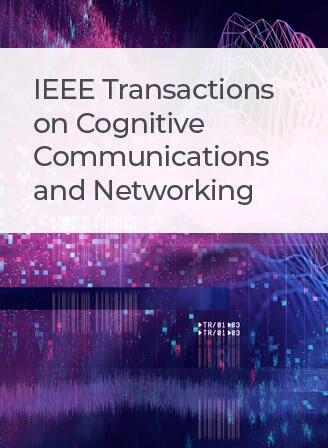Performance Impact of Coexistence Groups in a GAA-GAA Coexistence Scheme in the CBRS Band
IF 7.4
1区 计算机科学
Q1 TELECOMMUNICATIONS
IEEE Transactions on Cognitive Communications and Networking
Pub Date : 2020-06-17
DOI:10.1109/TCCN.2020.3003027
引用次数: 5
Abstract
The General Authorized Access (GAA) users in the Citizens Broadband Radio Service (CBRS) band are the lowest priority users. They must make sure that they do not cause harmful interference to the higher tier users while cooperating with each other to minimize potential interference among themselves. Thus, efficient GAA coexistence scheme is essential for the operation of GAA users and to obtain high spectrum utilization. Towards this goal, the Wireless Innovation Forum (WInnForum) has recommended three schemes to facilitate GAA-GAA coexistence. We had reported a performance study of one of these schemes (called Approach 1), but that study did not have any Coexistence Group (CxG). A CxG is responsible for managing interference among its CBRS devices (CBSDs). In this paper, we study the performance of Approach 1 without CxGs as well as with different number of CxGs, in various configurations. We conduct our study around two locations in the USA using actual terrain and land cover data of the continental USA. We evaluate performance of the scheme at different deployment densities, using different propagation models at those two locations with different number of CxGs. We provide some interesting insights into the costs and benefits of having CxGs in the deployment.CBRS波段GAA-GAA共存方案中共存组对性能的影响
公民宽带无线电服务(CBRS)频带中的一般授权接入(GAA)用户是优先级最低的用户。他们必须确保在相互合作的同时不会对更高层的用户造成有害干扰,以最大限度地减少他们之间的潜在干扰。因此,有效的GAA共存方案对于GAA用户的操作和获得高频谱利用率至关重要。为了实现这一目标,无线创新论坛(WInnForum)推荐了三种方案来促进GAA-GAA共存。我们报告了其中一个方案的性能研究(称为方法1),但该研究没有任何共存组(CxG)。CxG负责管理其CBRS设备(CBSD)之间的干扰。在本文中,我们研究了在各种配置中,不使用CxG以及使用不同数量的CxG的方法1的性能。我们使用美国大陆的实际地形和土地覆盖数据,在美国的两个地点进行了研究。我们在具有不同数量CxG的这两个地点使用不同的传播模型,评估了该方案在不同部署密度下的性能。我们对部署CxG的成本和收益提供了一些有趣的见解。
本文章由计算机程序翻译,如有差异,请以英文原文为准。
求助全文
约1分钟内获得全文
求助全文
来源期刊

IEEE Transactions on Cognitive Communications and Networking
Computer Science-Artificial Intelligence
CiteScore
15.50
自引率
7.00%
发文量
108
期刊介绍:
The IEEE Transactions on Cognitive Communications and Networking (TCCN) aims to publish high-quality manuscripts that push the boundaries of cognitive communications and networking research. Cognitive, in this context, refers to the application of perception, learning, reasoning, memory, and adaptive approaches in communication system design. The transactions welcome submissions that explore various aspects of cognitive communications and networks, focusing on innovative and holistic approaches to complex system design. Key topics covered include architecture, protocols, cross-layer design, and cognition cycle design for cognitive networks. Additionally, research on machine learning, artificial intelligence, end-to-end and distributed intelligence, software-defined networking, cognitive radios, spectrum sharing, and security and privacy issues in cognitive networks are of interest. The publication also encourages papers addressing novel services and applications enabled by these cognitive concepts.
 求助内容:
求助内容: 应助结果提醒方式:
应助结果提醒方式:


